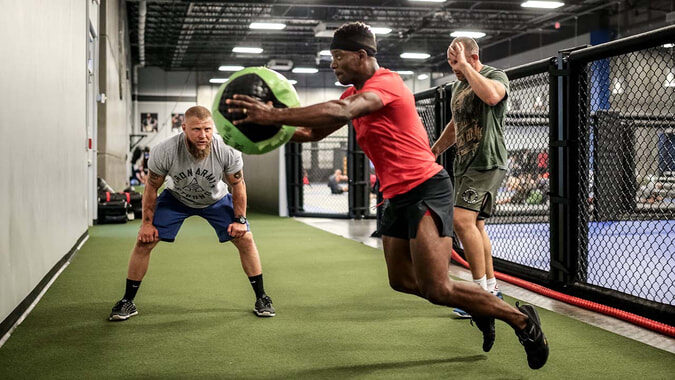- MMA & Combat Sports
CYBERNETIC PERIODIZATION FOR MMA PERFORMANCE
- By Phil Daru
- On January 22, 2020
In the world of mixed martial arts, there are many factors involved. With a tremendous amount of training from tactical, technical, S&C (strength and conditioning), and even recovery methods, there are many categories that need to be addressed through a training camp or even throughout the quadrennial plan. With that being said, we must understand each individual training session’s intensity levels, duration, and overall volume to help reduce the risk of overtraining and increase performance. In the essence of technology, we can utilize objective indicators to give us more of a future outlook on how things are going and what state of being the athlete is in throughout camp. These objective indicators are things like heart rate variability and velocity-based training monitors. This is a great way to utilize a means of overall readiness and give you real-time feedback on how that session or sessions prior affected the athlete’s nervous system. With that being said, not every coach or athlete has the ability to afford one of these monitors, and in my experience, most of them do not want to even bother with them due to inconvenience at times. Now I know this may seem odd, but it definitely does happen. So another way we can indicate the state of the athlete is a form of subjective measures.
In the book “Supertraining” by Yuri Verkhoshansky and Mel Siff, they explain the implementation of “Cybernetic Periodization,” which is a form of auto-regulation based on an individual’s prior training and overall fatigue. This is where we started implementing what’s called “RPE” or Rate of Perceived Exertion. This is a scale to measure intensity levels of a training session, set, or conditioning protocol. A 1-10 scale is given to the individual and is asked how he or she feels after the work is done. You can coordinate the intensity by giving out desired RPE numbers based upon the training effect. This also gives the athlete some autonomy on their own training, allowing for a more well-established training process.
The color system is used to help gauge different training intensities. Red usually means high intensity, while yellow is moderate, and green is light. We can simply provide a schedule to the athlete and have them mark in the color allotted for each training session through the weeks. More info on this is on page 196 of my friend Loren Landow’s book “Ultimate Conditioning for Martial Arts.” We also use this to make changes in the training volume or intensity of the skills or S&C training, which allows for a better overall training adaptation. The goal of cybernetic periodization is to optimize the training to allow for greater overall gains in strength, power, speed, conditioning, and tactical/technical training.
This can be done through any form of training; this is especially important for MMA athletes due to the demanding and numerous amounts of training sessions each week. Base your training around a set system, have a plan of action based upon the readiness of the athlete, and make sure to properly formulate the exercises, sets, reps, and rest periods to improve performance from general to specific.
If you want to learn more and start training, you can get my training templates on sale now – $20 each


